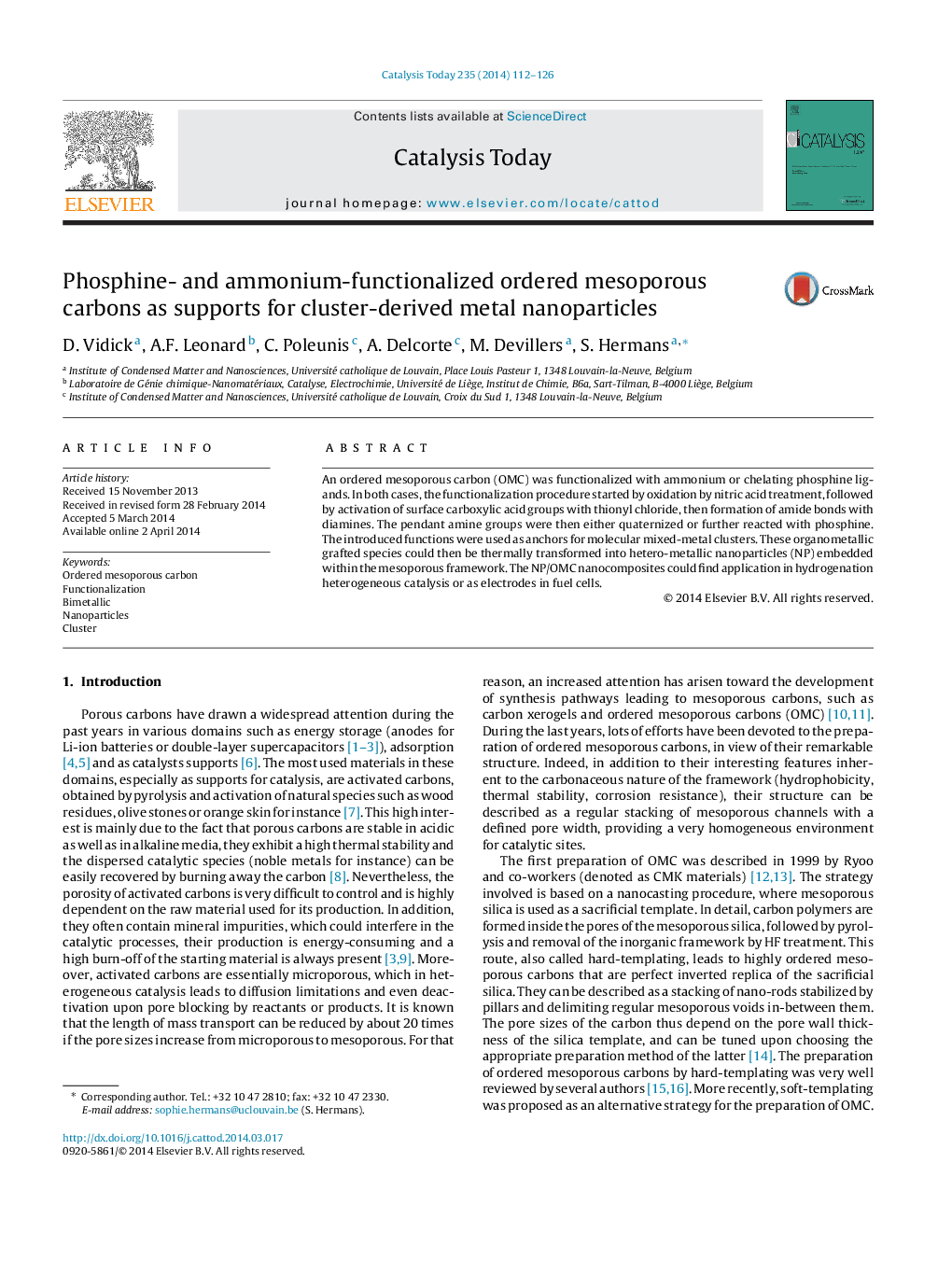| Article ID | Journal | Published Year | Pages | File Type |
|---|---|---|---|---|
| 54683 | Catalysis Today | 2014 | 15 Pages |
•An ordered mesoporous carbon was functionalized with ammonium or phosphine groups.•The surface functions were used as anchors for bimetallic cluster compounds.•The anchored clusters were ideal precursors of heterometallic nanoparticles.•Nanoparticles embedded within the mesopores of OMC were obtained.
An ordered mesoporous carbon (OMC) was functionalized with ammonium or chelating phosphine ligands. In both cases, the functionalization procedure started by oxidation by nitric acid treatment, followed by activation of surface carboxylic acid groups with thionyl chloride, then formation of amide bonds with diamines. The pendant amine groups were then either quaternized or further reacted with phosphine. The introduced functions were used as anchors for molecular mixed-metal clusters. These organometallic grafted species could then be thermally transformed into hetero-metallic nanoparticles (NP) embedded within the mesoporous framework. The NP/OMC nanocomposites could find application in hydrogenation heterogeneous catalysis or as electrodes in fuel cells.
Graphical abstractFigure optionsDownload full-size imageDownload high-quality image (254 K)Download as PowerPoint slide
